Church Of MO: 2005 Adventure Touring Comparo

We've been riding adventure bikes since before they were cool.
The adventure bike landscape in 2005 looked so much different than it does today. Just take a look at this adventure touring comparo from the time that we're featuring for today's Church of MO. All four contestants mark a point in time when adventure bikes were nearing the end of the analog stage but hadn't quite reached full digital status. Which bikes did we pick? Well, here's the list:
- Suzuki DL1000 V-Strom
- Triumph Tiger
- KTM 950 Adventure
- BMW R1200GS
- Kawasaki KLR650
Wait, what? A KLR650? Hey, they already had one laying around, so why not throw it in the test?!
Our motley crew from the 2005 era was captained by none other than Sean Alexander, who took pride in giving each of these machines a thorough flogging – and he'd make sure you knew it in the form of these words on this page. So, without further ado, Motorcycle.com's 2005 adventure touring comparo.
2005 Adventure Touring Comparo - Motorcycle.com
by MO Staff
Green Valley Lake, CA -- Adventure. The final frontier. In the pampered, middle-class existence we live in, everything seems too easy for the stout and hearty countenance of the MO reader.
If we wanted to spend our existence living in pampered luxury like Fran Drescher's Pomeranian, we would reject dangerous, hot, dirty motorcycles and buy Lincoln Towncars to transport us from air-conditioned office to shag-carpeted home theatre. But we crave danger, adversity and adventure. A thousand miles is just around the corner to us, and just because a road is a broken line on a map doesn't make it an insurmountable obstacle.
We need a motorcycle that can take us and our camping equipment, luggage and maybe a reluctant spouse on the freeway and twisty paved roads, roads that might lead to the previously mentioned broken lines on the map. This all means we need a motor powerful enough to pass at freeway speeds fully loaded, a chassis and tires that can handle twisty paved roads, and enough dirt capability to get us to our campsite in one unscuffed, unfatigued piece.
That is what we here at MO think an Adventure Tourer is.
We all know the benchmark of this genre of motorcycle is the original BMW R80GS. Introduced in 1982, the GS combined a smooth, powerful and torquey motor with a chassis and suspension that could handle either smooth dirt roads or the torturous Paris-Dakar rally with sufficient modification. Instantly a hit in Europe, this niche wasn't exploited by most manufacturers in the United States until very recently.
But with aging baby boomers looking for powerful, fun to ride bikes that serve as commuters, tourers or Sunday morning hooligan tools, there is suddenly a plethora of choices. Your faithful MOrons enjoy these bikes as well, and the response to our June, 2005 "It Ain't the Tool" shootout showed us you are interested, too.
There are more choices out there than the five bikes we selected for our test, but we found four bikes we knew you'd be interested in, plus one you should be interested in.
The Contenders
First we have the Suzuki DL1000 V-Strom. You can read the technical details in the "Tool" shootout, but it follows the Adventure Tourer formula nicely: big two-cylinder motor, long travel suspension, dirt bike handlebars, off road wheel sizes and a small fairing. As a Suzuki, it's widely available, reliable and priced reasonably at just $8,999. Can it hang with the more expensive European competition?
Next is the Suzuki's sister in spirit, the Triumph Tiger. The Tiger has been reviewed in MO as part of our last adventure tourer shootout and alone here. It was liked back then for having a comfortable seat and an easy-to-use, powerful motor.
To appease our readers who want Paris-Dakar credibility in their daily driver, we present two of the top competitors, the KTM 950 Adventurer and BMW R1200GS.
The KTM is a landmark machine from the Austrian company. The 942cc, 75 degree four-valve liquid-cooled V-twin engine was a first for KTM when introduced in 2003. It's good for 91 HP and 61 foot-pounds of torque and one of the lightest V-twin powerplants on the market.
It's bolted into a tubular chromoly space frame and uses 48mm WP forks up front and an elegant aluminum swingarm in the back, clamping real dual-sport sized spoked wheels. The wheels are protected by Pirelli dual-sport tires; the front is a 90/90-21 and the rear is a meaty 150/70-18. Braking is covered by a pair of 310 mm front discs and a 240mm rear disc. KTM topped it off with a 5.8 gallon fuel tank, a futuristic windshield and a halfway decent seat. Locking hard luggage is included on all 2005 950 Adventurers sourced through Hepco & Becker, and looks like it will survive the apocalypse.
An adventure tour without a BMW GS-series would be like opera without large singing women. We therefore present a 2005 R 1200 GS. We've already discussed this latest in the GS series last year. Sean makes it clear that he loves this bike, which is significantly lighter, faster and better handling than the slightly lardy model it replaced.
There we have over $46,000 worth of motorcycles, but do you need to spend big money to have big fun? We also had a 2005 Kawasaki KLR 650 in the MO garage, so we decided to send it along too.
After all, the KLR is also an adventure-tourer, if a budget one. Introduced in 1987, the liquid-cooled 650cc single is mostly the same, with just a few upgrades. We have tested it a few times now, most recently this month for our "It Ain't the Tool: The Shootout" story.
For riders, we drafted our usual MO crew: Publisher Sean "Dirty" Alexander with his high level of both dirt and pavement riding expertise, Feature Editor Gabe "Gabezilla" Ets-Hokin and Managing Editor Pete "Petey" Brissette to give the perspective of experienced street riders with minimal dirt skills, and our friend Jack "Strawman" Straw, owner of a 1988 BMW GS and experienced street and dirt rider. Jack came along so we could hear what a real-world motorcyclist thinks of these bikes in actual use. Photographer Alfonse "Fonzie" Palaima also came, transporting the fifth bike and playing caboose when not being the engineer.
For our destination, we assaulted the area around Big Bear Lake in Southern California. Just 100 miles from MO's Torrance, CA headquarters, Big Bear offers campgrounds, graded fire roads, lakes, twisty roads, liquor stores and Mexican restaurants: everything needed for serious evaluation.
Mix it all together and what do you get? Many gallons of burned fuel, dusty Aerostiches, sore backs and knees, a jumbo Wal-Mart tent full of farting and snoring, and plenty of notes about what works - and doesn't - in Adventure touring.
5th - Triumph
Let's make one thing clear about the Tiger: this is no enduro. It's a sport tourer with a big gas tank.
We all agreed that it has a great motor. The only triple in the bunch let us know what it was every time we rode it with a distinctive exhaust note that turned into a Ferrari-like howl. Even "tuned for torque", the docile and smooth motor still packs a punch at high rpms, while turning in a very decent 40.6 mpg average fuel economy. With a comfortable, adjustable seat and a decent windscreen that doesn't buffet too badly, the Triumph makes an excellent tourer. The bags are narrow enough for lane splitting, if not as high quality as the KTM's, but they lock and are included in the bike's $10,499 MSRP.
The smooth motor, decent luggage and wind protection make the Tiger Gabe's favorite on the freeway and twisty roads. Pete liked the Tiger on two-lane blacktop as well, but both he and Sean had other favorites. This shows that if the Tiger has a flaw on the street, it's that it doesn't have the edgy attitude that makes adventure bikes fun to own. As Petey says, "El Tigre is generally uninspiring." But the good suspension, ergonomics and solid feel won Gabe over to the British approach to touring and sporting riding.
But just as Gabe was prepared to buy vinegar for his French Fries and neglect his oral hygiene, he got his turn on the "improved" fire roads with the Tiger. At first, it was OK: the Tiger's low seat, manageable power and low center of gravity made it OK on dirt roads, as long as the surface was firmly packed.
The trouble started on a seemingly endless stretch of road deep with sand and dust. The Tiger's heavy front end wanted to "push" on soft surfaces, and Gabe found himself going into long, slow tank-slappers and speed wobbles. Gabe reported "an eight MPH tank-slapper isn't as terrifying as an 80MPH one, but you do get more sympathy from the 80 MPH crash." As it was, dumping the Tiger in that turn made us realize it's not a dual-sport either. An R1 would probably have been just as good for that stretch of the journey, and we would have had a better story.
The other testers were no more impressed. Jack felt like he was "beating up" the street-oriented Tiger, and Sean called the hapless triple "completely hopeless" in the dirt, as he did the V-Strom. Petey stoically endured his time on the Tiger and V-Strom, anticipating the fun he would have on the more dirt-oriented machines. Because of the failed experiment in the dirt, the Tiger was next to last in the fire-road competition.
4th - V-Strom
If adventure touring was all on paved roads, the V-Strom would be king. It has everything you need to be king of the road: smooth, torquey motor, firm yet compliant suspension, comfortable, upright seating and an overall feeling of purpose and quality.
On the freeway, the Suzuki is one of the better bikes here, with the only problem being the turbulence whipped up by that smallish windscreen way out in front of the rider. But even that can be mitigated by adjusting the windscreen in any one of three positions. If you can set the screen properly for your preferences, the comfortable seat and 40 mpg fuel economy (average) means you can go a long way without getting sore. We would like to applaud Suzuki's engineers for adding a slick remote preload adjuster knob for the rear shock, something which should be on every motorcycle big enough to carry a passenger. On many modern bikes adjusting the spring preload is a 20-minute job: with the V-Strom it's a snap.
When you get to the twisty roads, that flexible motor and good quality suspension allow you to keep anybody on anything in sight, as long as you are a competent rider. You get the joys of a big V-twin engine, without the sorrows of torture-rack sportbike ergonomics. It has great stability, is very easy to point into corners, and the commanding seating position gives confidence. The V-Strom was Sean's choice on twisty pavement: the neutral handling enables your riding to flow and gives good feedback, and the rest of us liked the V-Strom enough to vote it second best on twisty roads and interstates alike.
The party ends for Herr V-Strom when the pavement does. Even though ground clearance is not a problem on graded fire roads, its weight, tall gearing, and street tires keep it from being manageable in the dirt. Too much weight on the front end makes the front tire get stuck into ruts in sand and deep dust. Jack said it "was the worst in the dirt." because it had stiff suspension and is over-braked. Sean had fun riding it in the dirt (because if you're Sean, everything is fun to ride in the dirt), but acknowledged it was no dirt bike. Pete called it a "big loser" in the dirt, and as an inexperienced dirt rider, Gabe just gritted his teeth and plugged along on the V-Strom on fire roads, praying he wouldn't dump that bike as well before his turn on the KLR. It's no surprise the V-Strom was voted least favorite on fire roads, although it's more than competent doing anything involving pavement.
3rd - KLR
If the GS is James Brown, the KLR is Little Richard. But maybe the KLR should be James Brown? It is, after all, much harder working.
For instance, the KLR is pretty much using every last one of its 38 HP on the freeway where the other bikes are just loping along in top gear. The KLR can cruise at 90, but it's straining to do it with its buzzy, industrial motor. Also, the seat foam squashes down until you feel like you're sitting almost on the pan. Fortunately, the seat is big and wide enough to allow the rider to move around enough to drain the six-gallon fuel tank. With an average of 44.9 mpg, that's 269 miles to empty. Unfortunately, Pete found that "freeway time in excess of more than half an hour would be unpleasant with all that vibration", although nobody else complained about 60-mile humps on the KLR's buzzing backside.
On twisty roads, the KLR is light and fun to toss around, but the weak brakes and motor mean you have to work hard and use your skills to keep up with faster bikes. When the corners get a little wider and more open, the KLR rider will watch the faster bikes pull away, no matter how hard she works. However, as long as the speeds are kept below 90, a moderately skilled rider can do miraculous things on the KLR. The wide handlebar and light weight make direction changes easy, the upright seating position helps the rider see through the corners, and the soft motor encourages greater corner speeds. For 90% of your riding needs, the KLR does it all with utility beyond what you'd expect from a $5,199 motorcycle.
The value was so great that Jack Straw even made the comment that he'd "probably buy a KLR to replace [his] BMW." And that's not really surprising; the KLR's stone-axe simplicity and honesty keeps it the closest of all these bikes to the original BMW GS' bare-bones approach to touring. It also makes about the same amount of horsepower as the old air-cooled GS. And he's not the only one seriously considering adding a KLR to his stable: "At 18 years old, it's fully legal for any tomfoolery you'd care to dream up", said Sean, who knows a lot about tomfoolery with 18-year olds and has the stay-away orders to prove it.
You already know we liked the KLR on the twisties and tolerated it on the freeway. But it was on the dirt roads that the KLR shows its competence. As novice dirt riders, Gabe and to a lesser degree Pete, really needed a bike that was light, forgiving and not too fast. And that's what the KLR does well: instead of just resembling a dirt bike, the KLR is a dirt bike. Even though it doesn't have anywhere near the sophistication of the KTM or BMW, the light weight and manageable seat height make it more relevant at slower speeds for smaller, novice dirt riders. Sean would "recommend this bike first in this group to anybody with less than advanced dirt-riding skills," and Gabe said he "didn't really feel comfortable on anything else when the pavement ended."
We'd recommend this bike first in this group to anybody with less than advanced dirt-riding skills, if a large portion of a journey would be off the pavement. Sean said it would be better for adventures less than 100 miles from home as equipped, but he hinted that the massive savings could be used to modify the KLR, making it much better suited to long distance riding. This seems very logical: the $7,000 or more you'd save over buying the KTM or BMW will buy a lot of suspension, luggage, brake upgrades, tires, fuel tanks, GPS systems, exhausts, cylinder porting, light automatic weapons or whatever else you need to realize your circumnavigational fantasies.
Become a Motorcycle.com insider. Get the latest motorcycle news first by subscribing to our newsletter here.

Troy's been riding motorcycles and writing about them since 2006, getting his start at Rider Magazine. From there, he moved to Sport Rider Magazine before finally landing at Motorcycle.com in 2011. A lifelong gearhead who didn't fully immerse himself in motorcycles until his teenage years, Troy's interests have always been in technology, performance, and going fast. Naturally, racing was the perfect avenue to combine all three. Troy has been racing nearly as long as he's been riding and has competed at the AMA national level. He's also won multiple club races throughout the country, culminating in a Utah Sport Bike Association championship in 2011. He has been invited as a guest instructor for the Yamaha Champions Riding School, and when he's not out riding, he's either wrenching on bikes or watching MotoGP.
More by Troy Siahaan



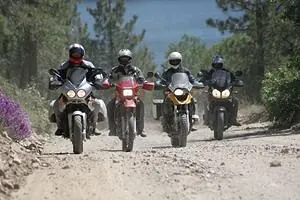























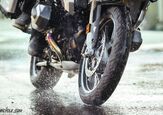
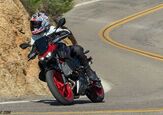
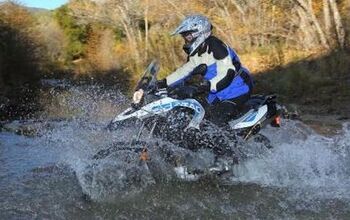

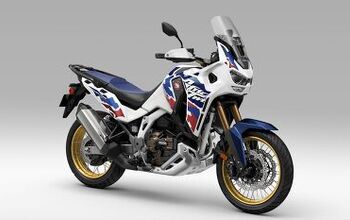
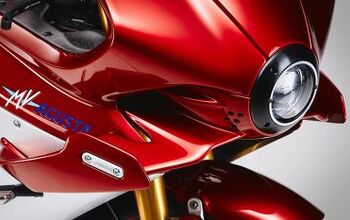
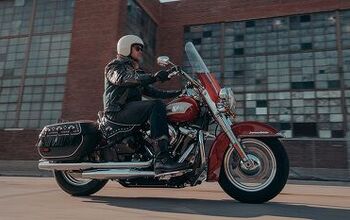
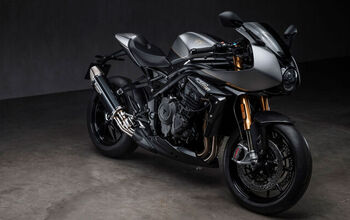
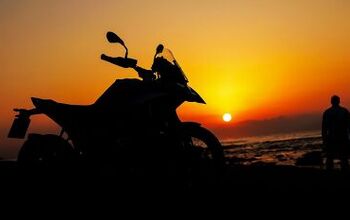


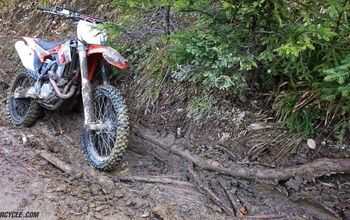



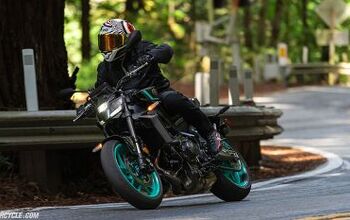




Comments
Join the conversation
Where is 2nd and 1st?